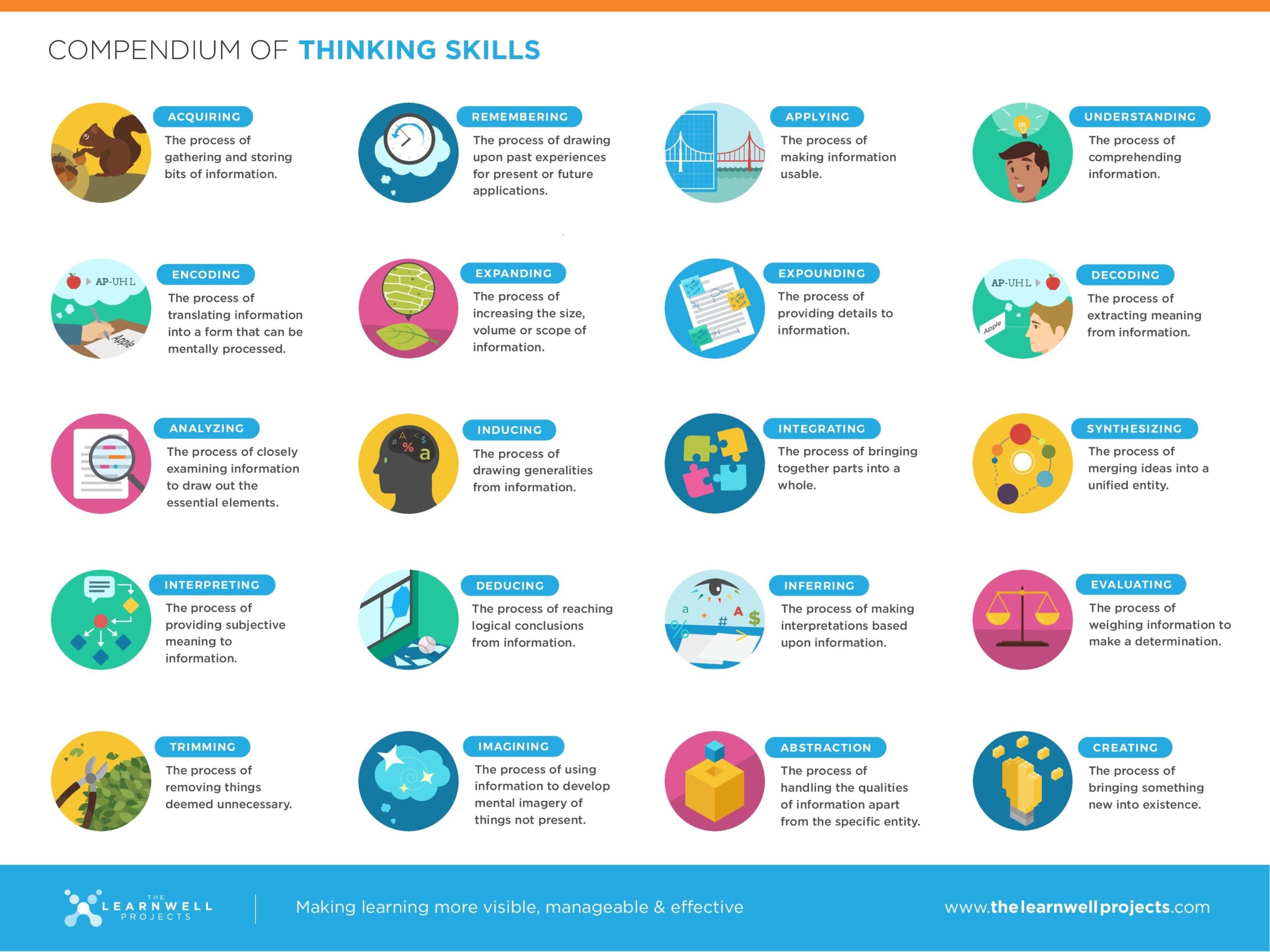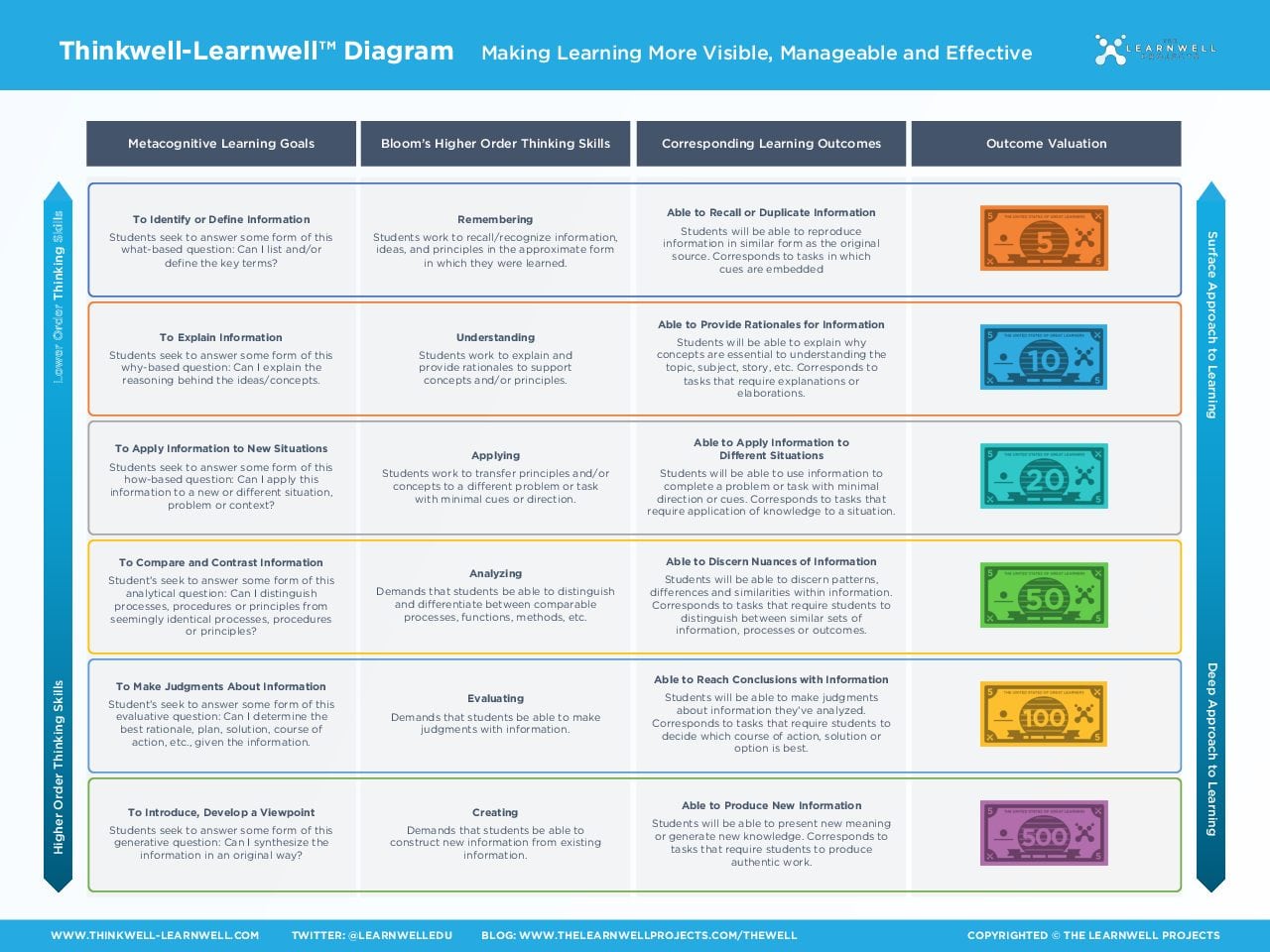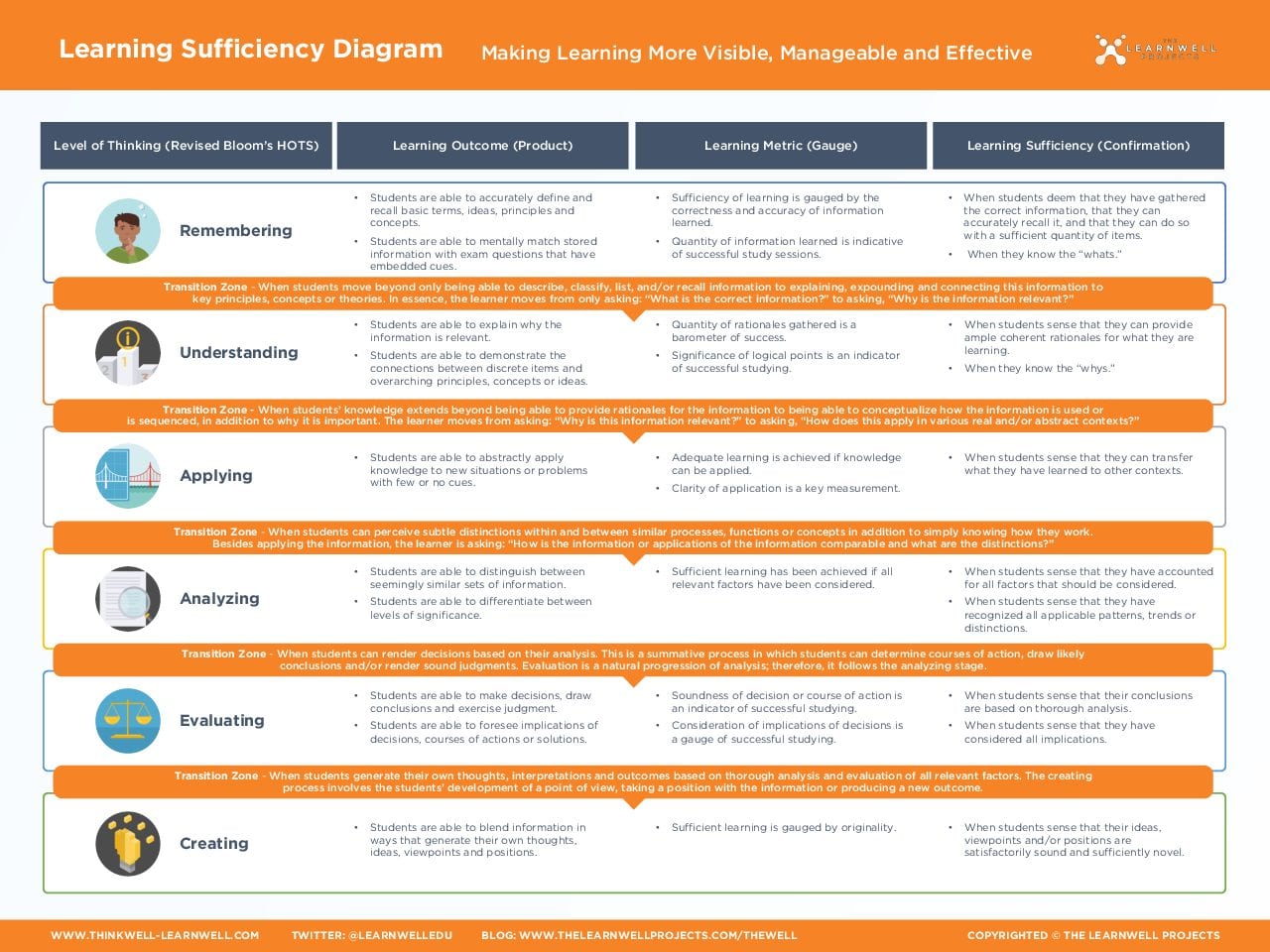Resources
The metacognitive tools below combine spacial cues, color tones, and cognitive science features to enhance students thinking, learning and performance.
In-class educators can unlock students’ critical thinking skills; learning assistance professionals can provide learners the cognitive infrastructure they need to work productively in cognitively complex environments; parents can equip their students with the cognitive skills necessary to excel in scholarship and the knowledge economy, and do-it-yourself students can use these tools to maximize performance and develop as confident, independent learners.
Immediately obtain your free PDF of each diagram using the form below. Click Here to Jump to the Form
COMPENDIUM OF THINKING SKILLS
CREATE CRITICAL THINKERS. CULTIVATE ACADEMIC CRAFTSMANSHIP. EQUIP FOR SCHOLARSHIP.
Students are measured by their academic craftsmanship. Whether taking a test, writing a paper, solving problems or conducting research, students must activate the proper mix of thinking skills for each respective task. Learning is stimulating and rewarding when students use the right skills. When they don’t, students and educators become frustrated.
The Compendium of Thinking Skills is a newly released academic tool that enables students to deliver excellent academic craftsmanship. It empowers educators to powerfully communicate their tasks while positioning students to deliberately select, monitor and evaluate the quality of their thinking.
No more sub-standard work! Create complementary learning environments with this new innovative tool.
THE THINKWELL-LEARNWELL DIAGRAM:
Whether the task is writing, reading comprehension or math, this tool makes academic success more attainable and much more enjoyable.
OBTAIN YOUR FREE PDFs OF THE DIAGRAMS
"*" indicates required fields
Call Us Today 1-866-337-3030



